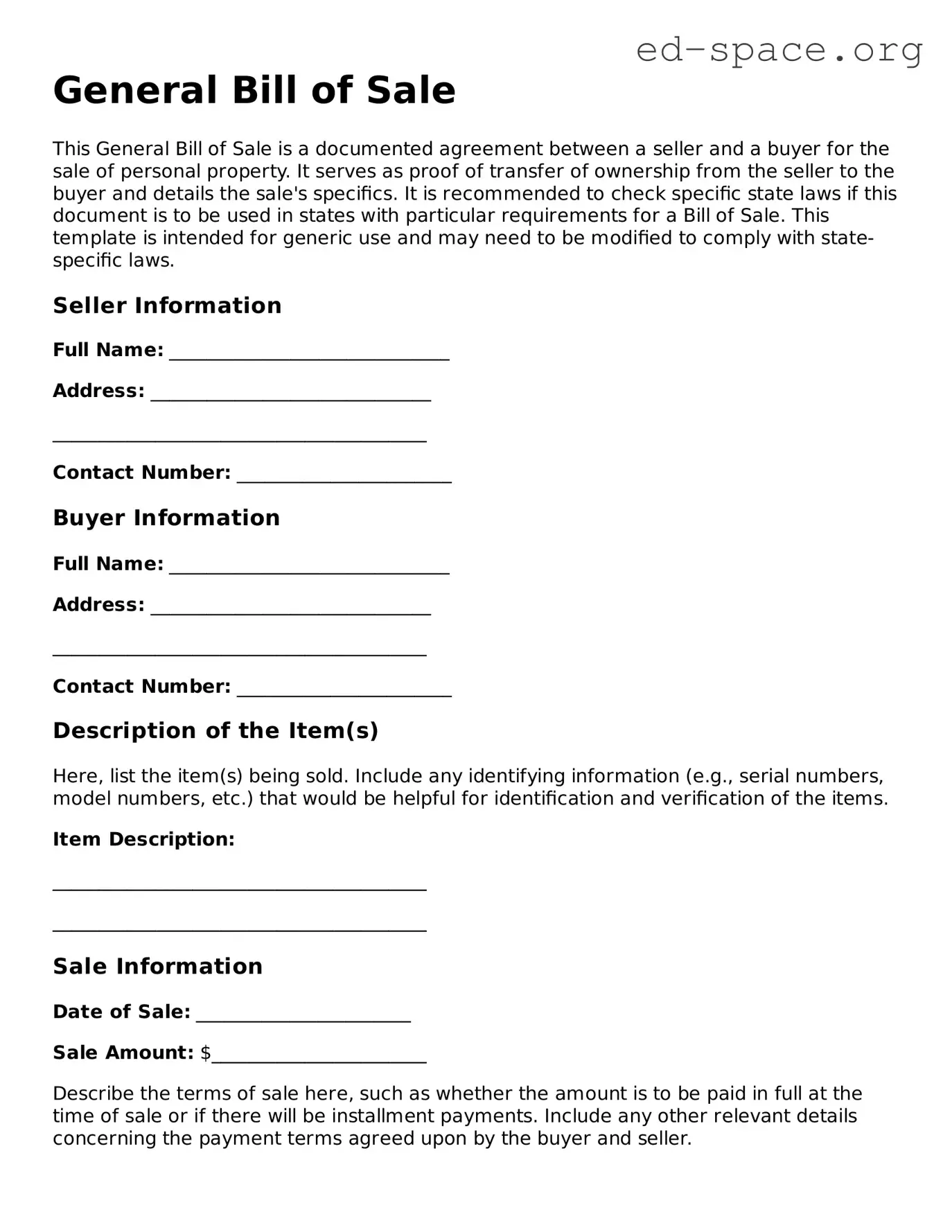General Bill of Sale
This General Bill of Sale is a documented agreement between a seller and a buyer for the sale of personal property. It serves as proof of transfer of ownership from the seller to the buyer and details the sale's specifics. It is recommended to check specific state laws if this document is to be used in states with particular requirements for a Bill of Sale. This template is intended for generic use and may need to be modified to comply with state-specific laws.
Seller Information
Full Name: ______________________________
Address: ______________________________
________________________________________
Contact Number: _______________________
Buyer Information
Full Name: ______________________________
Address: ______________________________
________________________________________
Contact Number: _______________________
Description of the Item(s)
Here, list the item(s) being sold. Include any identifying information (e.g., serial numbers, model numbers, etc.) that would be helpful for identification and verification of the items.
Item Description:
________________________________________
________________________________________
Sale Information
Date of Sale: _______________________
Sale Amount: $_______________________
Describe the terms of sale here, such as whether the amount is to be paid in full at the time of sale or if there will be installment payments. Include any other relevant details concerning the payment terms agreed upon by the buyer and seller.
Additional Terms and Conditions
If there are any additional terms and conditions of the sale, list them here. This could include warranties or guarantees provided, any liabilities, or any state-specific requirements that need to be met.
________________________________________
________________________________________
Acknowledgement of Receipt and Transfer
By signing below, the Seller acknowledges receipt of the full payment from the Buyer and transfers ownership of the item(s) listed above to the Buyer. The Buyer acknowledges receiving the item(s) and agrees to the terms of the sale as described above and any additional terms and conditions listed.
Signatures
Seller's Signature: ______________________________
Date: ___________
Buyer's Signature: ______________________________
Date: ___________
This document does not constitute a legal consultation. For any specific legal advice or concerns, please consult with a licensed attorney in your state.
